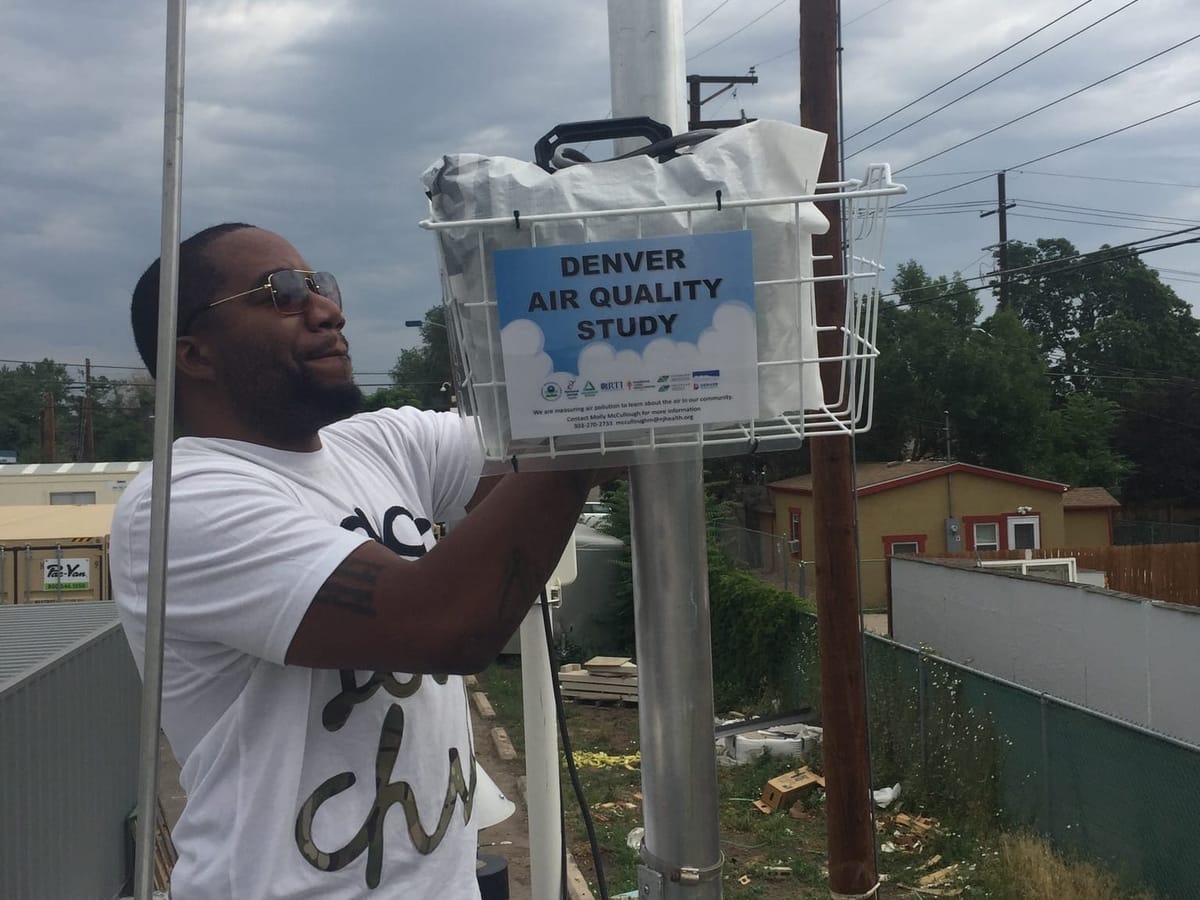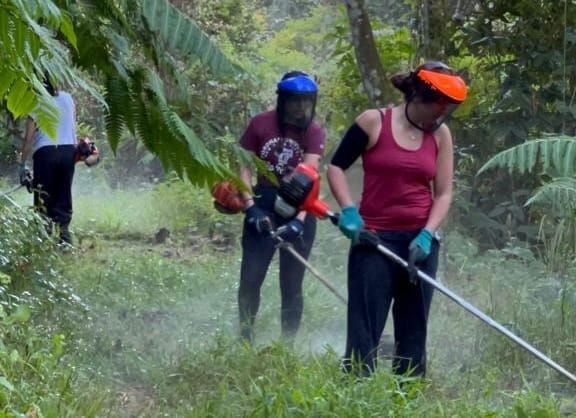Hundreds of millions up for grabs in environmental justice grants
Housing, air monitoring, green jobs and coastal resilience are some of the initiatives that could receive funding under the Inflation Reduction Act.

Published in the Louisiana Illuminator
It’s been nearly two years since President Joe Biden’s Inflation Reduction Act won Congress’ approval, but it’ll likely be months before that cash starts trickling into the marginalized communities it’s supposed to help.
The U.S. Environmental Protection Agency announced in December that the Biden Administration had picked 11 organizations to serve as grantmakers tasked with overseeing the allocation of $600 million in IRA grant funding. The money is intended to address decades of industrial pollution and disinvestment in targeted communities across the country. Advocacy groups are still awaiting word on how they can get access to those dollars.
Grantmakers have three years to award subgrants to community groups ranging from $150,000 to $350,000 for project assessments, planning and/or development. Also, $75,000 noncompetitive subgrants are up for grabs for local groups hoping to expand services to meet the demands of their communities.
One of the organizations chosen to issue the grants said it likely will be awarding $75,000 “capacity building” grants in the coming months to environmental justice groups on a “noncompetitive basis,” although programs could vary across the country. One environmental advocate in Louisiana questioned whether presidential politics could affect the awarding of grants if it stretches past the November elections.
The Environmental Justice Thriving Communities Grantmaking Program falls under the umbrella of the EPA’s Environmental and Climate Justice (ECJ) Program created through Congress’ allocation of approximately $3 billion from the IRA’s $900 billion spending plan. Funds funneled through the ECJ Program are providing the financial framework for nine other federally-funded environmental justice-related grant initiatives.
The range of areas and projects for which IRA money under the Thriving Communities program can be awarded include local clean ups, emergency preparedness, disaster resiliency programs, workforce development programs for local jobs that reduce greenhouse gas emissions, fenceline air quality monitoring, asthma-related projects, healthy homes programs and projects addressing illegal dumping.
Most of the designated grantmakers under the Thriving Communities program that Floodlight reached did not respond or said they weren’t ready to discuss how and when they would start awarding subgrants to local groups.
But the few who did said they are still in the preliminary stages of organizing outreach and awareness campaigns. They expect to start presenting project proposals soon to gauge what people in these marginalized communities need. Each of the grantmakers is tasked with creating distribution programs best suited for their coverage areas.
“We want to make sure this gives the power back to the community to identify what the priority areas are,” said Surey Miranda-Alarcon, director of campus and community engagement at Fordham University in New York.
Fordham is one of the 11 organizations serving as a regional or national environmental justice grantmaker. Ten grantmakers are getting $50 million each with one organization, Research Triangle Institute, receiving $100 million, tasked with awarding subgrants in multiple regions.

The grantmakers program builds on the Biden Administration’s Justice40 Initiative, which mandates that 40% of the overall benefits from certain federal programs flow directly to marginalized communities that are underinvested and plagued by environmental pollution.
Having regionally-focused grant oversight is designed to reduce the bureaucracy that smaller nonprofits and advocacy groups may find overwhelming because of a lack of resources, political power or staff.
Marginalized communities in many of the regions share many similarities. They’re primarily communities of color plagued with industrial pollution or climate-related disasters.
Julie Gafney, assistant vice president of Fordham University’s Strategic Mission Initiatives, said her organization plans to focus on air and water quality, including affordable and sustainable housing, food security, racial justice, financial security, recovery, coastal resilience and managed retreat.
Gafney expects Fordham to begin awarding subgrants this summer in EPA Region 2, which serves New Jersey, New York, Puerto Rico, the Virgin Islands and eight Native American nations. .
Representatives from EPA Region 1’s grantmaker, Health Resources in Action, and the Bullard Center at Texas Southern University, which is covering EPA Region 6, weren’t yet ready to talk about their approaches to doling out the IRA funds.
Cobey Culton, a spokesperson for the North Carolina-based Research Triangle Institute, said awards are likely to be made in the fall. The non-profit is serving as both a regional grantmaker for EPA Region 4, which encompasses eight states and six tribal nations in the Southeast, and a national-level grantmaker awarding subgrants to projects in EPA Region 7 in the Midwest.
“We anticipate the greatest number of awards will be noncompetitive, capacity-building grants ($75,000) for resource-constrained organizations,” Culton wrote in an email. “The specifics of each project will depend on the needs of the communities applying.”
Culton’s sentiments were echoed by other grantmakers.
“We will have a large number of listening sessions; we will have a very open and transparent grant process,” said Ruth Ann Norton, chief executive officer for Green and Healthy Homes Initiative.
Norton’s Baltimore-based organization specializes in housing and health crisis work in disinvested communities of color and is the designated grantmaker for EPA Region 3 in the Mid-Atlantic.
“We anticipate a very wide range of issues from air issues, air monitoring issues, water issues and housing issues,” Norton said.
Jackson Voss, climate policy coordinator for Louisiana-based advocacy group the Alliance for Affordable Energy, said he is watching to see if the program meets target dates for distributing the funding.

“We'll have to see how quickly these grantmaker programs build up the capacity to start holding competitive application processes, and whether they meet the summer subgranting goal,” Voss said. “It is a bit concerning to me that we're only seeing this come together now, because I'd imagine that if projects aren't funded and moving before the end of the year, a lot of this stuff could be in flux until we know the results of the 2024 elections.”
Based on the tier amounts Voss expects “fairly small projects” in scope and scale — likely subgrants that will support smaller components of larger projects, he said.
Andreanecia Morris, president and chairwoman of the Greater New Orleans Housing Alliance, said although the particulars of how subgrants will get awarded in her region are still unknown, she remains hopeful the IRA will reach the communities that need it. She said designating grantmakers in each EPA region “makes a lot of sense.”

Said Morris: “What I can tell from some of the other grantmakers that I've talked to in other regions, it seems like everybody's kind of figuring out how they're going to implement their program.”


